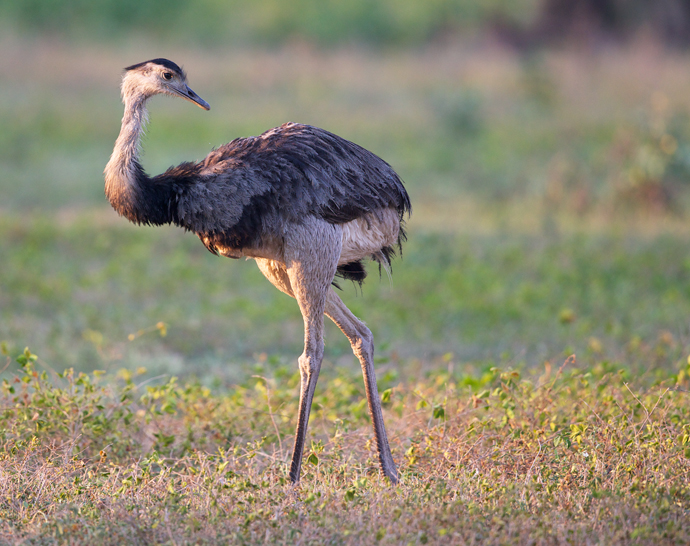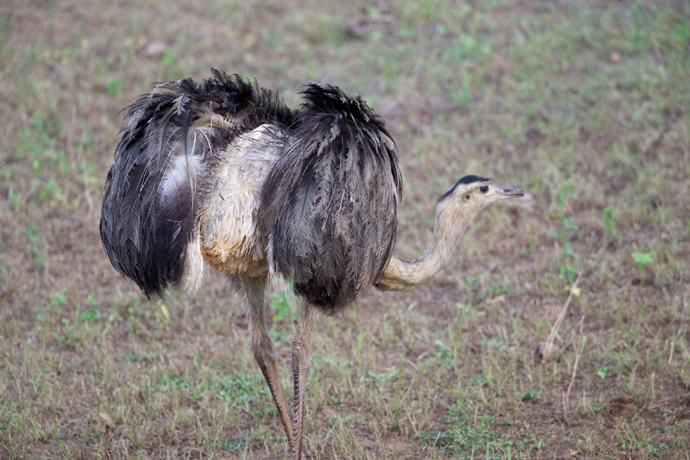Among the terrific birds WC was privileged to see on a recent to trip to Brazil was the Western Hemisphere’s biggest bird, the Greater Rhea. WC has written about the Greater Rhea before, but a bird this extraordinary deserves additional attention.
The Greater Rhea isn’t a Big Bird; it’s a huge bird. They weight 45-60 pounds, and stand just a little less than four to five feet tall. They are very fast runners, and can reach speeds of 40 miles per hour.
The Rhea is flightless, of course, but for a ratite they have fairly large wings. They extend the wings when running for balance and, as shown here, to cool off a bit when the temperatures are high.
Oddly enough, Rheas are biological proof of plate tectonics. Gondwana, the hypothetical single large continent, broke apart in stages. Africa split off first, and then Australia. That matches the speciation of Ostriches in Africa, Emus in Australia, extinct Moas in New Zealand and Rheas in South America fairly well, based on both the bids’ DNA and mitochondrial DNA (mDNA). Ornitholigists speculate that after the Dinosaur Killer meteor collision, it took about 10 million years before mammals evolved large predators, giving the birds time enough to evolve to larger sizes.
The dispersal and time of dispersal of Ratites – the large family of mostly flightless birds that includes Ostriches, Emus and Rheas, among other birds – matches the geology of the southern hemisphere against the biology of the birds. All of which makes the ancestral ratite really, really old, possible 80 million years old. If that’s true, the Greater Rhea is the closest thing to a living dinosaur.
Paleobiologists can work themselves into a froth over the details of all this. But the fundamental facts are reasonably clear: the Greater Rhea, whose evolution began on long-vanished Gondwana, is a relic dinosaur. Pretty cool.





Very, very cool, I’m glad you got pictures. When I was in South America a few years ago, I was also privileged to see several of them racing across the land. Unless you’ve seen them in the wild, you just can’t fully appreciate just how big & impressive they are. I wasn’t lucky enough to be able to get a picture, they were moving too fast. =)
LikeLike
PS, Thanks for the History. Our tour guide gave us a tiny bit of information about them, but nothing as complete as you provided. See – Man & Dinosaurs did & do exist at the same time. Shhhh, Don’t tell a creationist what I just said. =)
LikeLike
Really huge, the first (Lesser) Rheas I saw were in southern Chile. I was excited and a little worried to see a group of them trotting over the hills towards me. “Biggest birds I’ve ever seen”, I was thinking, and then Mom came over a ridge and made her chicks look small.
LikeLike